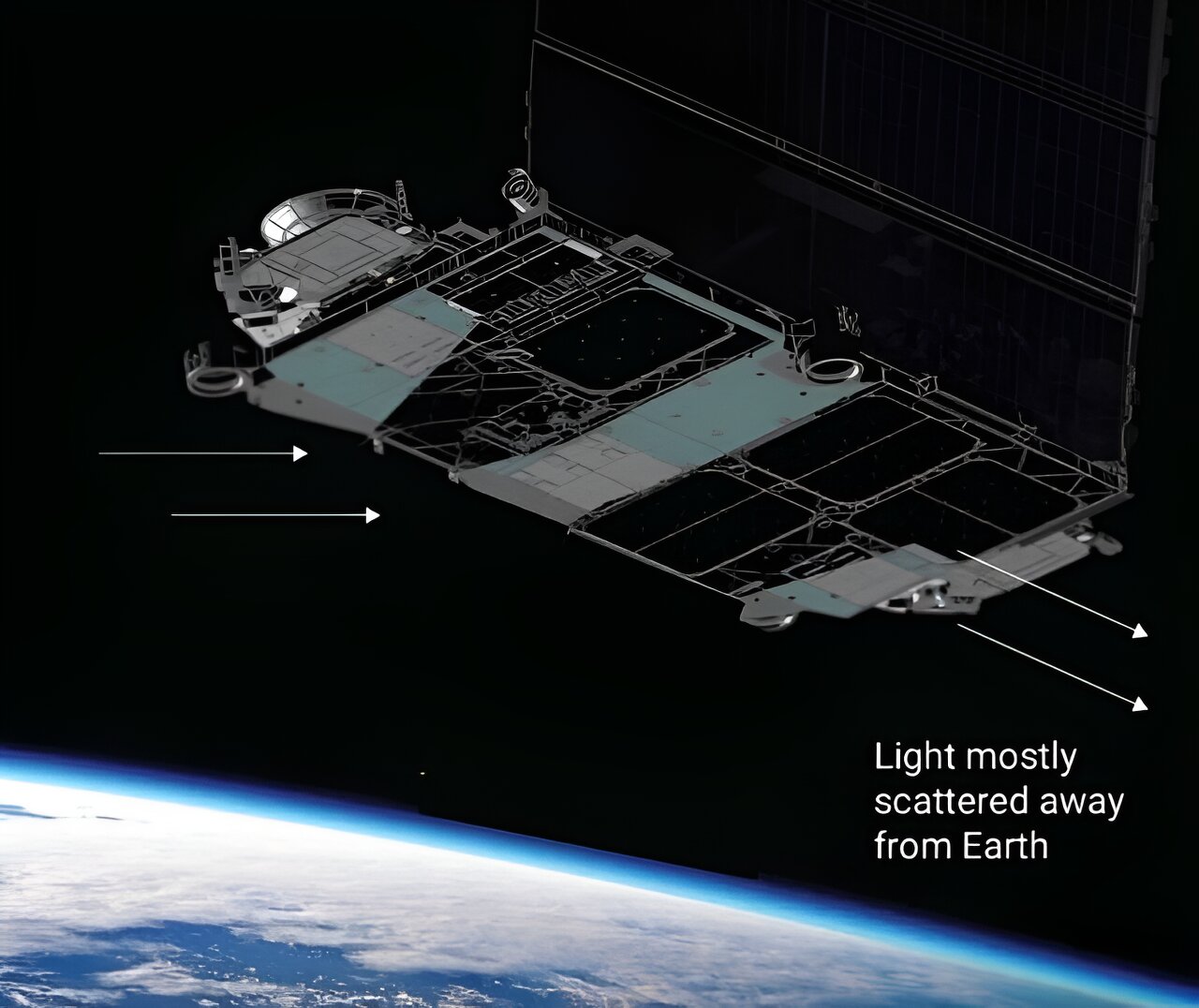A recently published scientific paper shows that despite SpaceX’s best efforts, Starlink satellites can generate very strong glare. Some of them are so powerful that they may seem like UFOs to pilots of civilian aircraft.

Glare from Starlink
Scientists continue to study the effect of Starlink satellites on the night sky. A recently published paper indicates that despite all efforts to reduce their reflectivity, in some conditions they can create extremely strong glare. Its author is researcher Anthony Mallama, who studies the issues of light pollution.
The main purpose of the new study was to obtain recommendations for companies producing satellites on how to reduce their reflectivity. For this purpose, Starlink was investigated both immediately after entering orbit, i.e. at an altitude of 300 km, and during the main stage of operation, when they were 500 km from Earth.
Scientists have found that in addition to the main mechanism of glare, which manifests itself as a not very strong glare and is visible when the satellite is directly overhead, other, much more exotic options are possible. Meanwhile, SpaceX’s efforts are aimed precisely at overcoming the first effect, not the second.
Satellites or UFOs?
Among other things, the study describes a situation when the sun shines on satellites from the side, for example, immediately after sunset, or before sunrise. Such glare is almost invisible from the surface, but aircraft pilots see them quite often and they mislead them.
The fact is that during such flares, the brightness of Starlink can fluctuate between -4 and -5 magnitude. For comparison, Venus has about the same amount. The only difference is that these unusual lights appear in a completely unexpected place.
And it is not surprising that from time to time even experienced pilots of civil airlines mistake them for UFOs. In 2022, 5 such cases were recorded in the world. Several more occurred during 2023-2024. The research cited in the article proves that all these are cases when Starlink has just been launched into orbit.
Mallama says that his research leads to quite interesting conclusions. According to him, now one of the approaches to reduce the brightness of satellites, which are becoming more and more in orbit, is to change their design so that they reflect sunlight not “down”, but into space. However, as practice has shown, this approach does not always justify itself and it is necessary to try something else.
According to phys.org


